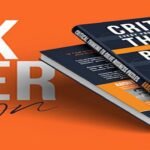Self-publishing has changed the writing world. It gives authors the freedom to publish their stories without waiting for traditional publishers. But becoming a successful self-published author takes more than just writing a book. You need the right tools, platforms, and support to turn your work into a professional product and reach the readers who will love it. Here’s a guide to the most helpful resources every self-published author should know.
1. Best Platforms to Publish Your Book
The first step is choosing where to publish. The right platform makes the process easy and helps you reach a wide audience.
- Amazon Kindle Direct Publishing (KDP): The most popular option for indie authors. It’s free, easy to use, and lets you publish ebooks and paperbacks for readers around the world.
- Draft2Digital: A user-friendly platform that distributes your book to multiple stores like Apple Books, Kobo, and Barnes & Noble from one place.
- IngramSpark: Best if you want to sell your print books in bookstores and libraries. It offers wide distribution and professional options for paperbacks and hardcovers.
2. Editing and Proofreading Tools
Even a great story can lose its impact if it has mistakes. Editing is essential for producing a polished book.
- Grammarly: Helps you catch grammar errors, spelling issues, and awkward phrasing.
- ProWritingAid: Gives deeper feedback on sentence structure, readability, and style.
- Hemingway Editor: Highlights complicated sentences and helps improve clarity.
These tools are useful, but hiring a professional editor is still a good idea if your budget allows.
3. Book Formatting Tools
A well-formatted book looks professional and is easier to read. These tools make formatting simple even if you’re not a designer.
- Reedsy Book Editor: A free online tool that creates clean, professional-looking ebooks and print files.
- Vellum (Mac only): Popular among authors for its beautiful layouts and ease of use.
- Atticus: Works on all devices and is a good alternative with lots of features.
4. Cover Design Resources
Your book cover is the first thing readers see, and it needs to grab their attention.
- Canva: Offers easy-to-use templates to design your own cover.
- Fiverr or 99designs: Connects you with designers who can create a professional cover at different price points.
- BookBrush: A design tool made specifically for book covers and marketing materials.
A strong cover can make the difference between a reader scrolling past your book or clicking to learn more.
5. Marketing and Promotion Tools
Publishing your book is only half the work. Marketing helps readers find it.
- BookBub: One of the best platforms for promoting books to large audiences.
- Written Word Media: Offers promotion services tailored for indie authors.
- MailerLite or ConvertKit: Email marketing tools to grow a mailing list and share updates with readers.
- Buffer or Later: Help you schedule and manage social media posts to promote your book.
Building an audience takes time, but consistent marketing pays off.
6. Author Websites and Branding
A professional website gives readers a place to learn more about you and your work.
- WordPress: A powerful platform with many customization options.
- Wix or Squarespace: Easier to use and ideal for beginners.
Your website should include a short bio, book information, links to buy, and a signup form for your email list. This builds trust and helps you stay connected with your readers.
7. Writing Communities and Support
Self-publishing doesn’t mean you have to do everything alone. Joining writing communities helps you stay motivated and learn from others.
- Scribophile: A writing workshop site where you can get feedback from other writers.
- Wattpad: A platform to share stories, grow a following, and test ideas.
- Author Facebook Groups: Great places to learn tips and share experiences with other indie authors.
Networking with other writers can lead to collaborations and marketing opportunities too.
8. Learning and Industry Resources
The publishing world keeps changing, so it’s important to keep learning.
- The Creative Penn Podcast: Offers advice from a successful self-published author.
- Jane Friedman’s Blog: Covers all aspects of publishing and marketing.
- Reedsy Learning: Free mini-courses on writing, publishing, and promoting your book.
The more you learn, the better you can manage your author career.
Conclusion
Self-publishing is an exciting journey that puts you in control of your writing career. With the right tools and resources, you can produce a professional book, reach readers, and build a brand that lasts. Start by choosing the best platforms, polishing your writing, designing an eye-catching cover, and planning your marketing strategy. Stay connected with writing communities and keep learning as you grow.
Every successful self-published author started with a single book and the right resources. With patience and persistence, you can do the same and turn your passion for writing into a rewarding career.











